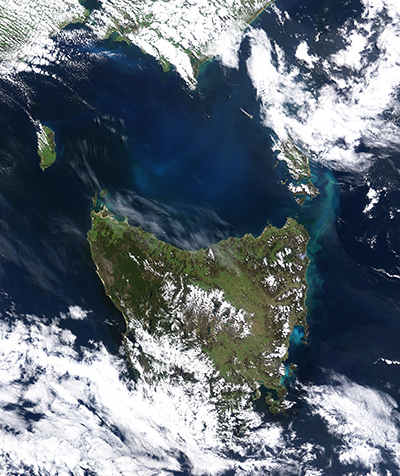
The Harmful Algal Bloom (HAB) Program of UNESCO’s Intergovernmental Oceanographic Commission has today launched a seven-year analysis of several thousand harmful algal bloom events occurring worldwide over the past 35 years. Here’s what scientists have found.
Harmful algal blooms can produce toxins that threaten human health and seafood security. They are also responsible for wild or aquaculture fish-kills, interfere with recreational use of coastal or inland waters, and cause economic losses.
While these blooms have been recorded as far back as the year 731, their apparent increase and expansion in recent times has raised concerns.
In 2013, a UNESCO working group of 109 scientists in 35 countries, chaired by IMAS University of Tasmania Emeritus Professor, Gustaaf Hallegraeff, set out to assess the local and global changes in harmful algal bloom occurrence and intensity between 1985 and 2018.
For this study, scientists analysed around 9,500 harmful algal blooms recorded during this 33-year period, with increasingly frequent blooms recorded in most coastal regions. This unprecedented effort has created the world’s first baseline to track shifts in the location, frequency and impacts of harmful algal bloom phenomena.
“We found that harmful algal blooms have increased in several regions, but have decreased or held steady in others,” Emeritus Professor Hallegraeff said.
“So while there’s a widely-held view that they are on the rise worldwide, perhaps due to climate change or nutrient pollution, we couldn’t confirm this. It’s also important to note that, as waters warm and acidify due to climate change, some troublesome algal species may thrive and others may decline.”
Emeritus Professor Hallegraeff said the increasingly frequent blooms recorded in most coastal regions are likely to be the result of more frequent monitoring in these areas.
 “Our growing human population is driving an increase in aquaculture and the exploitation of marine resources, especially in coastal zones. But while an algal bloom usually causes no harm to human society, a fish or shellfish farm in the middle of a bloom will be significantly affected.
“Our growing human population is driving an increase in aquaculture and the exploitation of marine resources, especially in coastal zones. But while an algal bloom usually causes no harm to human society, a fish or shellfish farm in the middle of a bloom will be significantly affected.
“It’s also clear that increased monitoring frequency, scientific knowledge and communication, along with new methods of identifying and quantifying cells and toxins, have led to more effective detection of blooms and impacts that are not new, but have previously gone unnoticed or been underestimated.”
When scientists factored in this increased monitoring, no clear global trend in harmful algal bloom events emerged, but some regions were noted as a cause for concern.
“In the Arctic Pacific, amnesic and paralytic shellfish toxins released by these blooms are increasing, while Northern Europe and Chile are experiencing mass bloom-related fish mortalities. But in regions like the Philippines and Egypt, the outlook is improving,” Emeritus Professor Hallegraeff said.
“These events are much more complex than previously thought and the impacts differ depending on which of the 250 harmful marine algae species is involved and where – and this highlights the urgent need for assessment on a species-by-species and site-by-site basis.
“Increased monitoring will help predict if, when and where harmful blooms will occur and their frequency and intensity, while ecological studies of the individual phenomena at local scale will inform action on a local and regional scale. This includes improving how we manage the use of coastal marine environments in the face of a changing climate.”
The study was published in a special issue of the Harmful Algae journal, with a synthesis also published in Nature Communications.
Images:
Published 9 June 2021